Everything you need to know to pass your tests is located in these sections. It is important that you study the material for each topic. Sample questions are provided to help you test your knowledge.
On This Page
You must obey all official signs, signals, and markings unless you see a police officer or road worker redirecting traffic.
Signs often use symbols or pictures rather than words. Each type of sign has a special color and shape to help you easily recognize the sign at a glance.
Regulatory Signs—Prohibitive
Traffic signs that prohibit certain actions or movements are red in color and increase safety by controlling the flow of traffic through intersections.
Stop—Octagon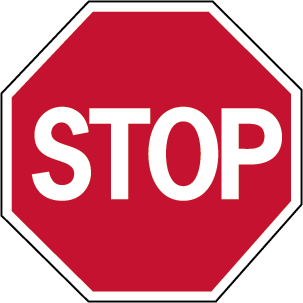
This sign means you must come to a complete stop. Yield to other vehicles and stop and stay stopped for pedestrians crossing in marked or unmarked crosswalks. When it is safe, you may enter the intersection.
Yield—Triangle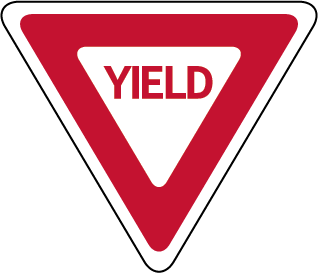
This sign means you should reduce speed and yield right of way. If needed, stop the same as you would for a stop sign.
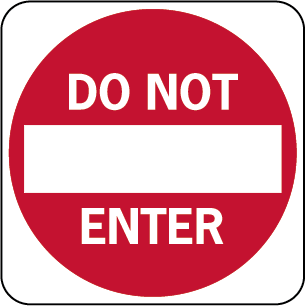 Do Not Enter—Square
Do Not Enter—Square
This sign warns you not to enter a road or freeway. You will see this sign if you are going the wrong way. Study For Your Tests
The signs below prohibit certain actions. When you see a sign with a red circle and a slash mark, it means do not make the turn shown.
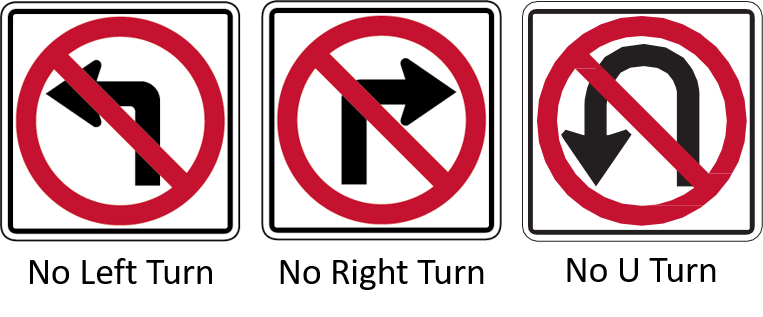
Regulatory Signs—Other
Regulatory signs are rectangular with black words or symbols on a white background and tell you what to do. They are posted at or near where the requirement applies. Not all regulatory signs are shown here.
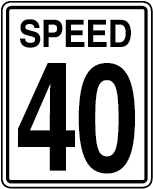
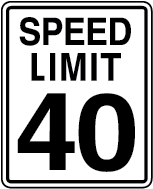
Speed Limit
This indicates the maximum speed in miles per hour. Signs may be electronic and may change based on current conditions.
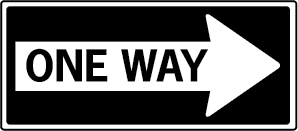
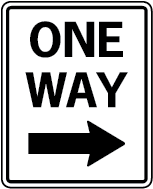
One Way
Traffic flows only in the direction of the arrow.
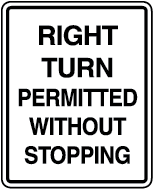
 Right Turn Permitted Without Stopping
Right Turn Permitted Without Stopping
This sign may appear below a stop sign. Traffic turning right may turn without stopping. Other traffic must stop and yield right of way.
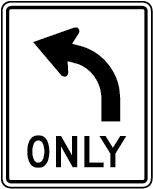
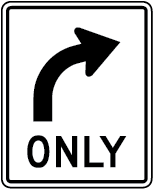
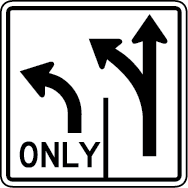
Lane-Use Control
These signs are used where turns are required or permitted from lanes as shown.
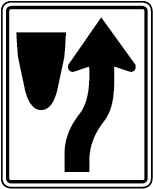
Keep Right
A traffic island, median or obstruction divides the road ahead. Keep to the right.
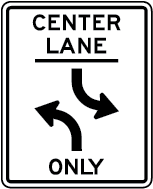
Center Lane Turn Only
Share the center lane for left turns from both directions
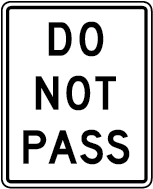
Do Not Pass
This sign indicates that you may not pass.
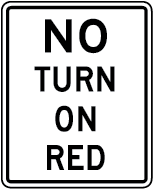
No Turn on Red
You may not turn during the red light. You must wait for the signal to turn green.
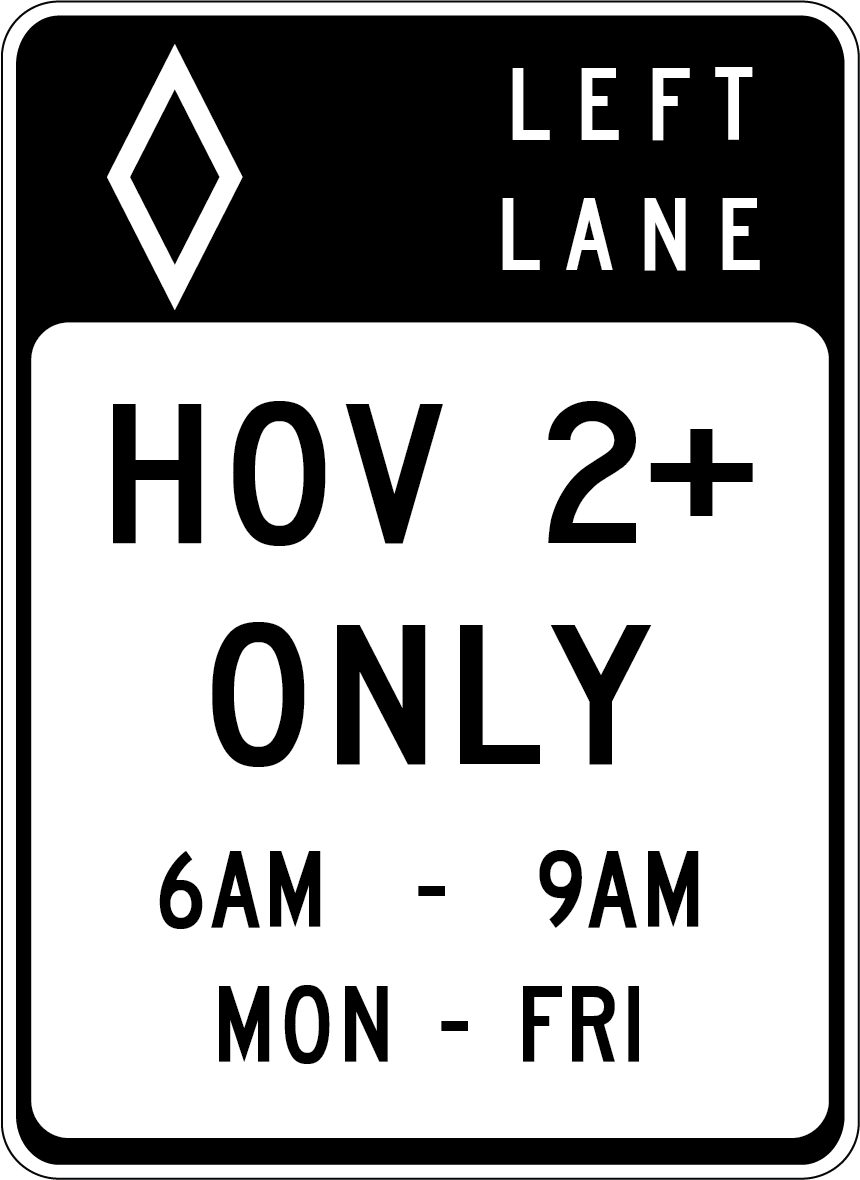
High Occupancy Vehicle
The lane is reserved for vehicles carrying at least two or more persons as noted on the sign. A white diamond may be painted on the lane.
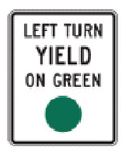
Left Turn Yield on Green:
On a green circular signal, yield the right-of-way to oncoming traffic and pedestrians until it is safe to turn.
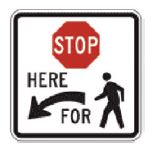
Stop Here for Pedestrians:
This sign may appear near a crosswalk. Stop at the stop line when a pedestrian is in the crosswalk.
Warning Signs
Warning signs are yellow and alert you to known possible hazards or a change in road conditions ahead. As a driver, you are ultimately responsible for recognizing and reacting correctly to changing conditions, signed or not. Not all warning signs are shown here.
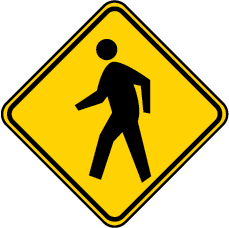
Pedestrian Crossing
Be alert for people crossing your path. These signs may include a flashing yellow beacon that indicates a pedestrian is crossing, has recently crossed or is about to cross.
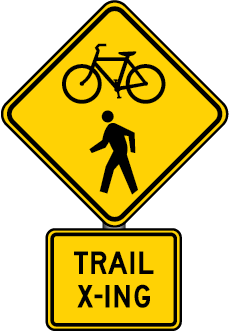
Multiuse Path Crossing
Bicyclists and pedestrians regularly cross the road in the area.
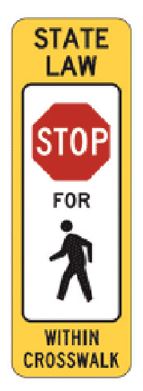
In-Street Pedestrian Crossing
This sign may appear at a crosswalk. Stop when a pedestrian is in the crosswalk.
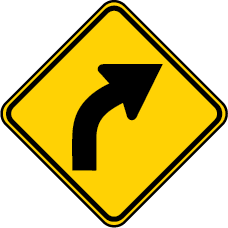
Curve
There is a curve ahead.
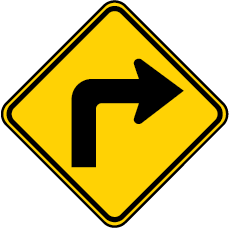
Sharp Turn
There is a sharp turn in the road ahead.
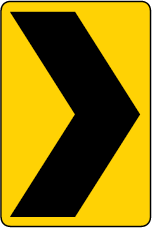
Chevron
A sharp curve or change in the direction of the road is at the sign.
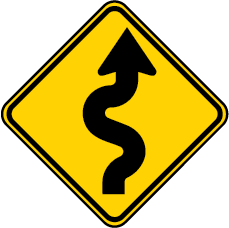
Winding Road
The road contains a series of turns or curves.
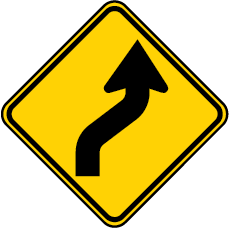
Reversing Curves
The road ahead curves to the right, then left.
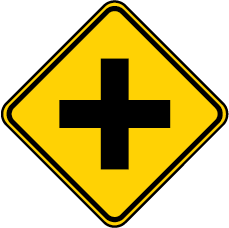
Crossroad
A four-way intersection is ahead. Cross traffic may enter the road.
Side Road
A “T” intersection is ahead. Traffic may enter the road from the left or right.
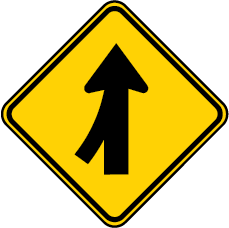
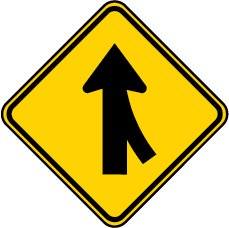
Merge
Traffic is merging from the side shown.
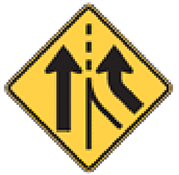
Add Lane
Two roadways join together. You do not need to merge.
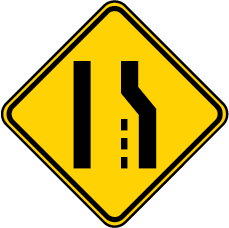
Lane Reduction
The indicated lane ends soon. Vehicles in that lane must merge into the through lane.
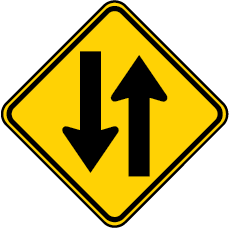
Two-Way Traffic Ahead
The one-way road joins a two-way road ahead. You will be facing oncoming traffic.
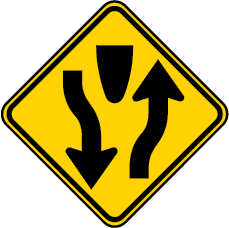
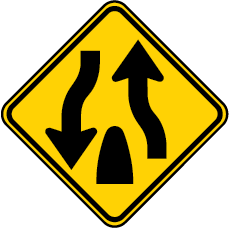
Divided Highway Begins or Ends
These signs indicate the beginning or end of a divided highway. Keep to the right.
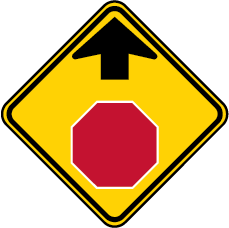
Stop Ahead
There is a stop sign ahead. Slow down and prepare to stop.
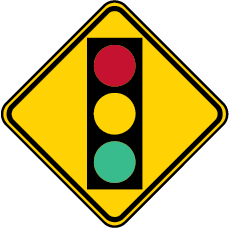
Signal Ahead
A traffic signal is ahead. Slow down and be ready to stop.
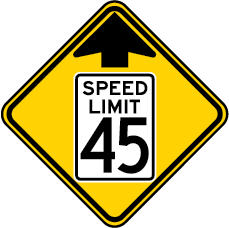
Reduced Speed Limit Ahead
Gradually slow to the indicated speed.
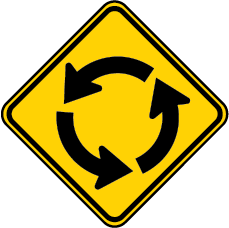
Roundabout Ahead
There is a roundabout intersection ahead.
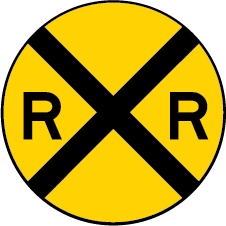
Railroad Advance
A railroad crossing is ahead. You may have to stop.
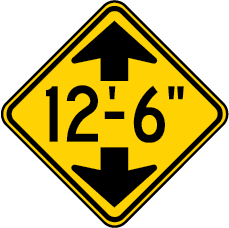
Low Clearance
The overpass ahead has low clearance. Do not proceed if your vehicle is too tall to pass under it.
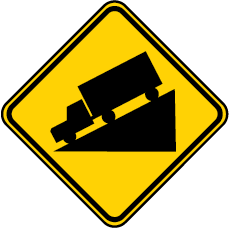
Hill
A steep grade is ahead.
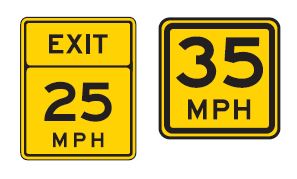
Advisory Speed
Advises the safe speed for freeway ramps and curves. This sign may be used with other signs. Signs may be electronic and may change based on current conditions.
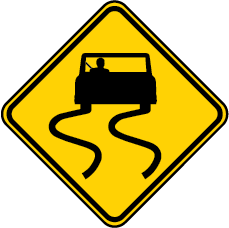
Slippery When Wet
The pavement is unusually slick when wet.
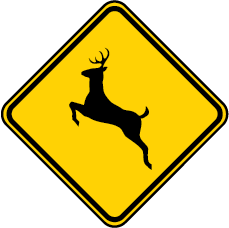
Deer
Deer often cross the road in this area. Be alert. Slow down if you see deer or other wildlife.
Route, Guide, and Information Signs
Route signs show you which route you are on and if the road is an interstate, U.S. route, or state highway.
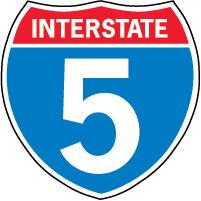 Interstate Route
Interstate Route
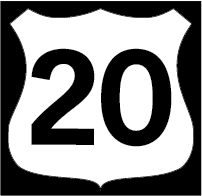 U.S. Route
U.S. Route
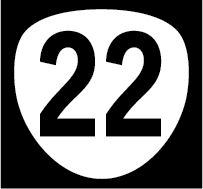 State Highway
State Highway
Guide or information signs are green. They give exit information or show the direction of roads or cities.
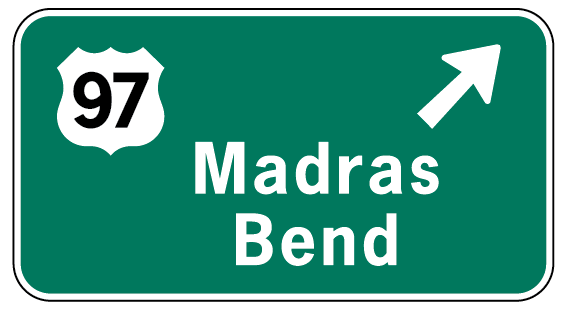
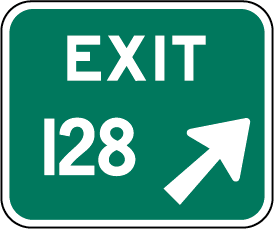 The number on an exit sign helps you know which exit to take.
The number on an exit sign helps you know which exit to take.
Safety Corridors
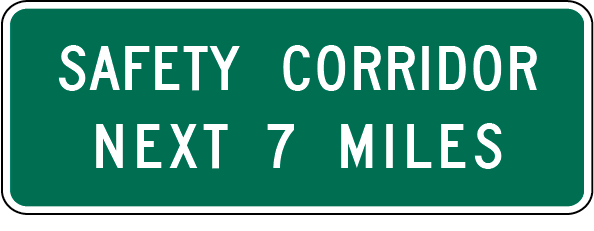 Safety corridors are designated stretches of highway with more fatal and serious injury crashes than the statewide average. Turn on your lights for safety. Signs identifying safety corridors may include diamond shaped flags.
Safety corridors are designated stretches of highway with more fatal and serious injury crashes than the statewide average. Turn on your lights for safety. Signs identifying safety corridors may include diamond shaped flags.
Historic, Cultural and Recreational Signs
These brown signs point to historic and cultural locations. They also point to scenic areas, picnic grounds, and parks.
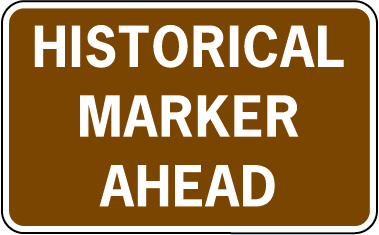
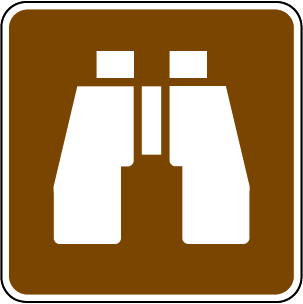
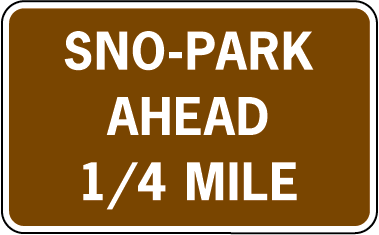
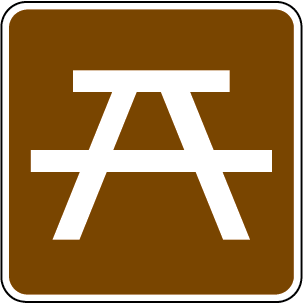
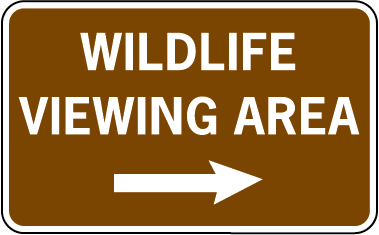
Motorist Service Signs
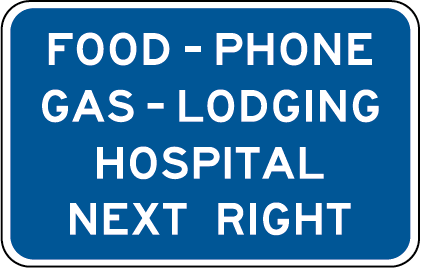
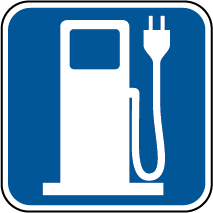
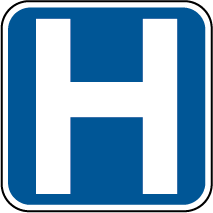
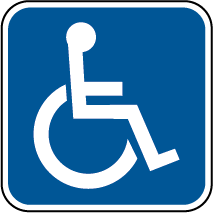
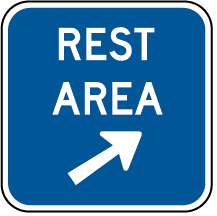
These blue signs tell you about
services or facilities along the highway. These signs may indicate gas, food, and lodging are available at the next exit, a rest area is ahead, an electric vehicle charging station is available or a facility or parking area is accessible to a person with a disability. They can also indicate the road to a hospital.

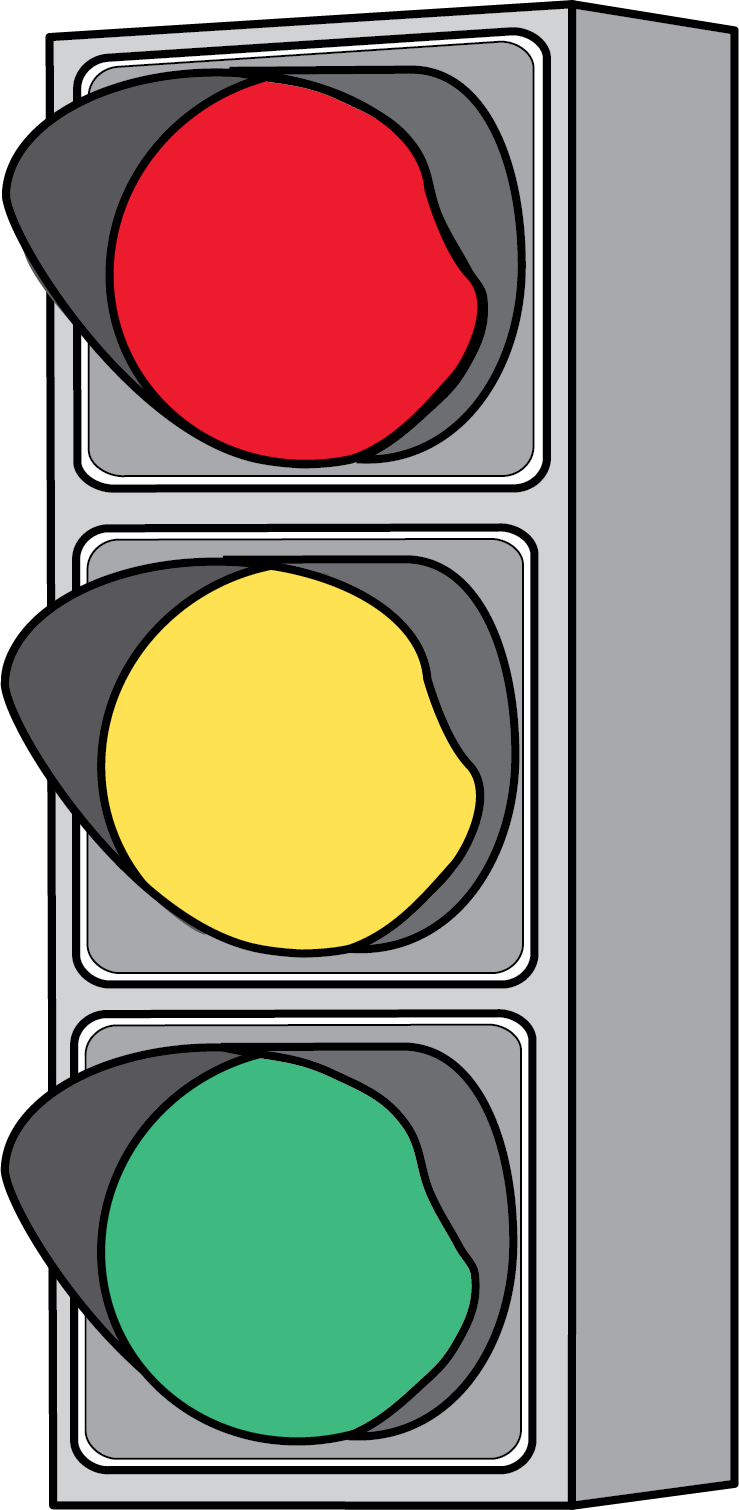
Traffic signals control the right of way and provide for a smooth, orderly flow of traffic. If a signal appears dark, such as during a power failure, you should stop as if there are stop signs in all directions. When a traffic signal is out of order and flashes yellow or red, you must obey that signal.
Steady/Circular Red
 A
steady red signal means stop and remain stopped until the signal changes.
A
steady red signal means stop and remain stopped until the signal changes.
You are allowed to make the following turns on red after coming to a complete stop unless a sign or police officer states otherwise:
- When entering a two-way road, you may turn right.
- When entering a one-way road, you may turn right or left in the direction of the one-way road.
Flashing Red or Dark Signal
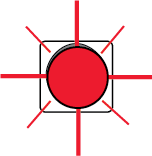 A
flashing red or a dark signal is treated the same as a stop sign.
A
flashing red or a dark signal is treated the same as a stop sign.
Red Arrow
 A
steady red arrow means stop and remain stopped until the signal changes, except for allowed turns on red. The same turns allowed for a steady red signal are allowed for a red arrow.
A
steady red arrow means stop and remain stopped until the signal changes, except for allowed turns on red. The same turns allowed for a steady red signal are allowed for a red arrow.
Steady Yellow
 A
steady yellow signal warns you that the signal is about to turn red. Stop before entering the intersection. If you cannot stop safely, drive carefully through it.
A
steady yellow signal warns you that the signal is about to turn red. Stop before entering the intersection. If you cannot stop safely, drive carefully through it.
Flashing Yellow
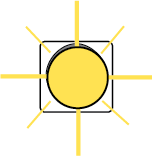
A
flashing yellow signal means slow down and proceed with caution.
Yellow Arrow

A
steady yellow arrow warns you that the signal is about to turn red. Stop before entering the intersection, or if you cannot stop safely, drive carefully through it.
Flashing Yellow Arrow
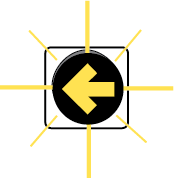
A
flashing yellow arrow means that you may make the movement indicated by the arrow, but first you must yield to pedestrians and oncoming traffic. Oncoming traffic has a steady green signal.
Steady Green
 A
green signal means all movements—straight ahead, left or right turns—are permitted, unless prohibited by a sign. Left turns must first yield to pedestrians and oncoming traffic. Right turns must first yield to pedestrians.
A
green signal means all movements—straight ahead, left or right turns—are permitted, unless prohibited by a sign. Left turns must first yield to pedestrians and oncoming traffic. Right turns must first yield to pedestrians.
Green Arrow
 A
steady green arrow means you have the right of way and may make the movement indicated by the arrow.
A
steady green arrow means you have the right of way and may make the movement indicated by the arrow.
What does this sign mean?

- Curves ahead.
- Slippery when wet.
- Obstacle in the road.
Regulatory Prohibitive signs are red and white. Which one of these signs is a regulatory prohibitive sign?
- Do Not Enter.
- Railroad Advance.
- Hospital Ahead.
If a traffic signal is dark because of a power outage, you should:
- wait for a police officer to direct traffic.
- treat it like a yield sign.
- treat it like there are stop signs in all directions.